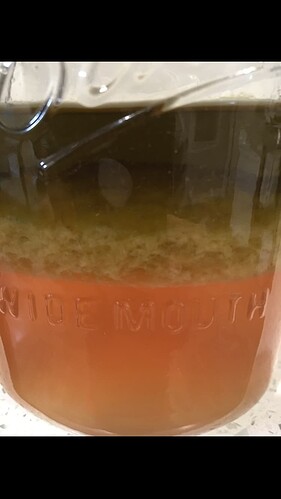I recently shed my certified organic skin and am tinkering with some new methods, one of which is methanol winterization. There’s a few interesting threads on here about using methanol for winterization and I’ve done a fair bit of tinkering using 90/10 and 80/20 mixtures for room temperature winterization. I’ve found 90-95% methanol with a 5:1 solvent:oleo ratio seems to work with an initial filter to get the first half and chilling to -20C and filtering the rest. An idea popped into my head: will adding salts help precipitate fats and if so will this lower cannabinoid affinity?
I would imagine it could help. I’ve never tried to salt out fats but my years of protein chemistry and protein engineering, salting out is a very common practice to aid in the precipitation of proteins out of a solution for purification and concentration purposes.
The theory is that you are adding increased ionic strength to the solution, so any interaction between the solvent and target precipitate is decreased through the competition with the solvent and salt interactions.
The only thing is that this type of system, from my experience, is often used in aqueous based applications. I’m not saying that it won’t work using an organic solvent, but as you increase the hydrophobicity or reduce the polarity of the liquid phase that you are salting out in, you potentially reduce the solubility of said salt. Reducing the salt solubility means you are not increasing the ionic strength of the solution as much and thus would potentially be a sub-optimal process and may or may not even provide adequate benefit of precipitating out more than without the salt.
Considering that we’re already talking about reduced salt solubility in methanol vs water, you are chilling the solution. Chilling a solution also decreases solubility further, so it may end up that most of the salt just precipitates itself out of the methanol in a cold environment.
You can salt out soaps with concentrated salt solutions…but again this is based in an aqueous environment. Soaps and any fats or waxes would probably be more similar than proteins and the fats or waxes.
I don’t have an answer, these are just some things to think about. Trial and error is always the best option - you can experiment with various salts. I know ammonium sulfate salts were commonly used when I would salt out proteins.
EDIT If we look at a basic salt, sodium chloride, it is almost 25x more soluble in water than methanol at room temperature. So at -20 I wonder if there would be any solubility at all, or enough to even have an impact. Obviously there are a lot of other salts to look at, but I would imagine most of them would have similar solubility issues using an organic solvent.
At 5:1 and -20 c you should be able to precipitate all the fats out pretty easy
I use 6:1 and get them all out at -20c
Fair enough, figured it would be interesting
1% should be more than sufficient for this effect. This is simple to salt in LLE keeping water out of the organic layer, and similarly, though less effectively, organic solubles out of the water layer.
The interesting thing to me is the 90:10 mixtures (no salt) tend to leave a layer of green/black at the bottom which has some graininess to it and the remaining methanol is the typical yellow/brown color. Not to sure if I’m seeing a yield loss with this, may need to up the solvent ratio.
I played around with salting out using isopropanol and some trim. The resulting extract was way cleaner than a long soak but probably not better than a really quick, cold rinse.
I’m sure there was a lot of cannabinoids in the fat I tossed out because the yield was poor.
I used sodium chloride but I kept seeing potassium carbonate mentioned when salting out methanol is referenced specifically. No idea if that’s significant.
I think increasing the ionic strength of the polar portion should mimic salting out with fats even though they aren’t (highly) polar.
Probably not as efficiently because the London dispersion would be the driving force instead of the polar moment of the compound.
Currently trying to raise my distillate potency and I stumble onto this old thread of mine looking for ways to pull out impurities.
My process has changed a bit, now dewaxing after distillation to cut down on the quantities that need post processing since a lot of waxes tend to be residue anyway.
Testing using alumina with methanol to help pull out residual FFAs as is, but I want to test adding calcium chloride to a methanol solution to see if that precipitates fats as well; then filter through alumina to pull out calcium soap. A hard soap should precipitate well
Definitely gunshy adding 2+ ions to distillate, but am also curious if soaps are more or less soluble in alcohols. Also concerned about the displacement rxn of CaCl2 + 2RCOOH → Ca2RCOO + 2HCl ![]() . The alumina should pull that out but…
. The alumina should pull that out but…
